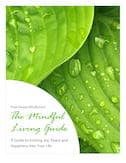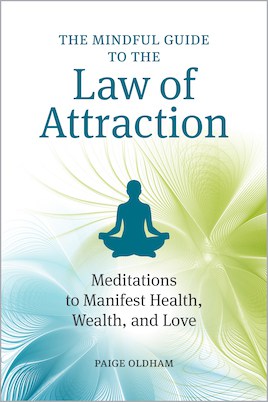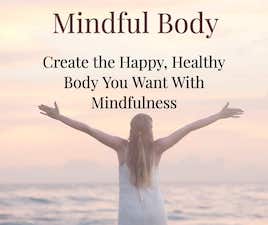“Imagine a Ms. A – a wellness junkie who dutifully attends her trampolining and Pilates classes several times a week, eats five or more servings of fruits and veggies a day, watches out for saturated fats, avoids sugar, and has never smoked. Now imagine a Ms. B – an overweight couch potato who loves cookies and chips and sometimes has a few shots of tequila too many.
“Ms. A is also a slightly neurotic workaholic who feels like she is always running around. She is single, lives on her own, and doesn’t know her neighbors. She also doesn’t have time to go out with friends and often feels lonely. She doesn’t volunteer, and if you were to ask her about the purpose of her life she would be lost for an answer. On the other hand, our cookie-loving Ms. B leads a very socially engaged life. She has two very close friends and a loving husband and often pops over to her neighbors’ for a chat. She volunteers at a local charity and is very committed to its cause. She sings in a choir and does shopping for her elderly aunt once a week. She likes to sit on her porch enjoying sunsets.
“Who will live longer? Of course, no one can ever predict the longevity of any particular person. But research that compares the effects of healthy eating and exercise on longevity to those brought by healthy social lifestyles shows that the lonely fitness freak Ms. A and the junk-food crazed yet very social Ms. B probably have a similar shot at becoming centenarians.”
 This scenario is the premise for a book I recently read: Growing Young: How Friendship, Optimism, and Kindness Can Help You Live to 100 by Marta Zaraska. It piqued my interest because I’m tired of the barrage of books and articles about how a certain food or group of foods is suddenly evil and should be avoided by everyone at all costs (carbs, lectins, fats, etc.). These books cover the effects of these foods in isolation, as if in a controlled lab, instead of with real people living their lives with all of their biological and environmental variations. This isn’t how life and health actually work. Growing Young takes a more holistic approach and shows that having a solid social life and healthy mental health are actually more important to our longevity that what we eat.
This scenario is the premise for a book I recently read: Growing Young: How Friendship, Optimism, and Kindness Can Help You Live to 100 by Marta Zaraska. It piqued my interest because I’m tired of the barrage of books and articles about how a certain food or group of foods is suddenly evil and should be avoided by everyone at all costs (carbs, lectins, fats, etc.). These books cover the effects of these foods in isolation, as if in a controlled lab, instead of with real people living their lives with all of their biological and environmental variations. This isn’t how life and health actually work. Growing Young takes a more holistic approach and shows that having a solid social life and healthy mental health are actually more important to our longevity that what we eat.
Working in the mental health world, I know that diet and exercise can only take a person so far, although diet can have a dramatic impact on mental health (check out Grain Brain by David Perlmutter, MD). Emotions also play a critical role in our mental and physical health. When emotions aren’t resolved and end up buried in our bodies, they create physical dis-ease. And our emotions are critically linked to how we see ourselves and interact with the people around us thus affecting our social life.
A Healthy Social Life Matters
Every one of us is unique in our biological makeup and our emotional temperament. As humans, we’re social beings. Whether you’re an extrovert or an introvert like me, it’s important to have social contact in ways that work for you.
Diet and exercise may improve the results of your blood tests, but if you’re lonely and disconnected, these things won’t do anything for your happiness. And who wants to live a longer yet unhappy life?
In the first section of Growing Young, the author shows how science has proven that boosting social connections is critically important to living a longer, happier life. Doing any of the following can dramatically improve your life:
- Find a dedicated romantic partner or work on your current relationship
- Volunteer
- Keep diverse friendships
- Give and get lots of hugs (read the book to learn more about “cuddleries”)
- Kiss your partner more often
- Hold hands with your kids
- Treat yourself to a massage
- Look others in the eye to raise oxytocin levels for both of you (even if it’s your dog)
In the second section, she shows how your relationships and your mind can extend your life. As a science journalist, Marta uses a wide variety of research performed by experts to prove her points. For example, regular exercise can improve your mortality risk by 23% to 33% while a happy marriage can improve it by 49%. Eating at least six servings of fruit and vegetables a day improves your longevity by 26% and a large social network can improve it by 45%.
On the detrimental side, grade 2 or 3 obesity can decrease your mortality by 29% and loneliness can decrease it by 26% with pessimism, unhappiness, and neuroticism decreasing it by 14% each.
Connection is Key
Finding ways to connect with others on a regular basis is critically important. Connection includes growing your empathy, checking your attachment style, and doing things in synchrony with others (singing, walking, dancing).

Finding ways to support others can help develop empathy and connection. Donating to charity, caring for others, volunteering for causes you believe in, talking to your neighbors, and engaging in random acts of kindness all help you see things through someone else’s eyes to better understand how you can contribute.
Connecting with others can also help you find your purpose. Your purpose gives you your “why.” Your “why” tells you why it’s important to do whatever it is you choose to do. The more you live in alignment with your purpose, the happier you’ll be.
Mindfulness for Relationships
The book includes an entire chapter on how meditation and mindfulness boost health. Mindful breathing can help lower stress and anxiety. A regular mindfulness practice can reduce worry and rumination. Mindfulness can help you grow acceptance which allows you to better manage anger and cynicism.
Jon Kabat-Zinn developed the Mindfulness-Based Stress Reduction (MBSR) program in the 70’s to help hospital patients heal faster. Over the past five decades, it has been developed into a formal program and has been proven to improve overall health on many levels.
“Mindfulness interventions make people more aware of their feelings and more collected in their responses – instead of blowing up at your partner about the car not being fixed, you might just say that you are upset after work and need time to yourself. The fight is averted.”
“Another mechanism through which mindfulness-based stress reduction may improve relationships is related to the key ingredients of mindfulness: non-judgment and acceptance. By honing acceptance skills during meditation, partners may become more tolerant of their loved ones’ shortcomings and imperfections. Instead of dwelling on the dirty socks left in the middle of the room, you just breathe deeply and let it go. Studies confirm that greater levels of mindfulness correlate to greater satisfaction in romantic relationships.”
This chapter makes the case that practices like mindfulness, meditation and yoga may not directly improve your longevity (although research continues), these practices do allow you to have better relationships, help reduce feelings of loneliness, and reduce nicotine cravings. They change the way you see and interpret yourself and your world allowing you to feel happier, even when nothing has changed. You learn how to enjoy the simple things in life.
If you’re tired of feeling like you have to follow special diet and exercise protocols to be healthy, this is a book for you. You’ll learn the power of living a simple, mindful life in alignment with your purpose, having good relationships, and helping others can all help you live longer. The book is full of simple steps to a happier life.
 Marta Zaraska is a Canadian-Polish science journalist. She has written about nutrition and psychology for the Washington Post, Scientific American, The Atlantic, The Los Angeles Times, and New Scientist, among others. She is the author of Meathooked: The History and Science of Our 2.5 Million-Year Obsession with Meat.
Marta Zaraska is a Canadian-Polish science journalist. She has written about nutrition and psychology for the Washington Post, Scientific American, The Atlantic, The Los Angeles Times, and New Scientist, among others. She is the author of Meathooked: The History and Science of Our 2.5 Million-Year Obsession with Meat.
Create the life you want: Combine the law of attraction with mindfulness
The law of attraction suggests that our positive or negative thoughts bring about positive or negative experiences. My latest book, The Mindful Guide to Law of Attraction, pairs that belief with the powerful practices of mindfulness. Through intentional breathing, writing, and engaging, you’ll hone a method for manifesting health, wealth, and love―the elements of happiness.
Let the law of attraction work for you by adopting its basic steps of identifying and visualizing the things you desire. Then use 45 practical meditation techniques included in the book to achieve awareness. By concentrating your positive energy on obtaining your wants, you’ll give yourself permission to receive them.
To your happiness! ~Paige

You can find this book at Amazon, Barnes & Noble, Books-A-Million, and Indigo.







 The Mindful Living Guide
The Mindful Living Guide




I could really use an improvement in the “connection” part of my life! With some recent health issues, pandemic, and all…I feel like I shut down a little bit. Now, I’m feeling more awake, trying to make better choices and create better habits — and I’m seeing my life and the world in a truer reality. Something else I’ve realized is that all the ones we love, especially those older, won’t be around forever — so it’s important to share in the joy of being with those relatives and friends while it’s possible.
What do you do if nobody wants to be your friend despite your best efforts? Actually these kind of posts are a bit like a slap in the face of people like me who have a very difficult time to interact socially. Not only do I have to cope with the loneliness and the nagging feeling of being a terrible human being whom everyone abhors, but my disability to make friends will also make me sick and increases my mortality risk. Wow, so uplifting ?, guess I have to stick to dieting.
So funny Paige I was saying to my doctor that I planned on living a long healthy happy life till at least 96, so thanks for some extra tips that I can use to support this.
I read somewhere that seeing someone’s face as on zoom or similar is a better way to feel connected than on the phone…so that’s part of my current reality.
That’s interesting – my target age is 104. I figure the longer I live, the more people I can positively impact.
I would agree that seeing someone live, even if it’s on a screen, is better than not seeing them at all. There are so many subtle aspects of a person’s face that are critical in a complete form of communication. In the mental health world where face-to-face therapy has been the norm, we’re seeing how moving to screens for teletherapy, even if it’s live video, can reduce the effectiveness of the session. It’s a brave new world we’re living in although our minds and biology are having a hard time catching up, evolutionarily speaking.
Paige,
i’m so happy you’ve written on this topic, as i think it helps to be reminded of how important they are to our health and well-being, especially in this digital age when we can so easily get sidetracked online. i’ve been reading about how our brains are designed to have rich, in-person conversation or in times like COVID-19 these kinds of conversations can take place on Zoom or Skype or by phone. The quick likes a single word or phrase comments we share on social media, does not in any way measure up to the need we have for person to person conversations.
At the same time, I’m ready about the benefits of solitude. So I’m aiming for a mix of healthy social interactions and solitude as well
As a major introvert, I can understand the need for solitude. We need it to rejuvenate ourselves after a certain amount of social interaction. We also thrive on one-to-one live social interaction, not the “interaction” that social media feeds us. The damages caused by social media, especially on kids and young adults, is growing exponentially. Countering this with healthy doses or face-to-face interaction and activities is increasingly important for everyone’s mental health.